#radioactive software
Explore tagged Tumblr posts
Text

270 notes
·
View notes
Text

2 notes
·
View notes
Text

USA 1993
#USA1993#ACCLAIM#AUDIOGENIC SOFTWARE#IMAGINEERING INC.#ACTION#LICENSED#THE SIMPSONS#IBM#AMIGA#ATARIst#SPECTRUM#AMSTRAD#C64#SEGA GENESIS#SNES#NES#SEGA MASTER SYSTEM#SEGA GAME GEAR#GAMEBOY#KRUSTY'S SUPER FUN HOUSE#THE SIMPSONS BART VS THE SPACE MUTANTS#BART'S NIGHTMARES#ESCAPE FROM CAMP DEADLY#BART VS THE WORLD#BARTMAN MEETS RADIOACTIVE MAN
31 notes
·
View notes
Text




🚀NEW! NUCLEAR ELECTRICS PRG1 M-420 🚀
With:
✧ A lightweight sleek new design and comfortable grip
✧ Easy to use Barometric frequency dial
✧ In unit COMMS device and AM Radio
✧ Scientist approved Plasma Induction Chamber
Thanks to wonderful innovation at NUCLEAR ELECTRICS Scientific Facilities our company is now no longer just a family brand! While we strive to bring comfort and efficiency to your home we also pledge our loyalty to our country and will be joining the fight, with our new Plasma Ray Gun 1 Model 420 we can bring our support to the front lines
Now for a mere $690.99 ᵃⁿᵈ ʷᶦᵗʰ ᵗʰᵉ ᵃᶦᵈᵉ ᵒᶠ ᵗᵃˣᵖᵃʸᵉʳ ᵈᵒˡˡᵃʳˢ You too can own one of our PRGs!*
*ᴺᵒᵗ ᵃᵛᵃᶦˡᵃᵇˡᵉ ᶠᵒʳ ᶜᵒᵐᵐᵉʳ��ᶦᵃˡ ᴾᵘʳᶜʰᵃˢᵉ ᴹᶦˡᶦᵗᵃʳʸ ᴾᵉʳˢᵒⁿⁿᵉˡ ᵒⁿˡʸ
NUCLEAR ELECTRICS sʜᴀʟʟ ɴᴏᴛ ʙᴇ ʜᴇʟᴅ ʟɪᴀʙʟᴇ ғᴏʀ, ʙᴜᴛ ɴᴏᴛ ʟɪᴍɪᴛᴇᴅ ᴛᴏ: ɪɴᴊᴜʀʏ, sᴘᴇᴄɪᴀʟ ᴏʀ ᴄᴏɴsᴇǫᴜᴇɴᴛɪᴀʟ ᴅᴀᴍᴀɢᴇᴅ ᴄᴀᴜsᴇᴅ ʙʏ ɴᴇɢʟɪɢᴇɴᴄᴇ, ᴍɪsᴜsᴇ ᴏʀ ᴛʜᴇ ᴜsᴇ ᴏғ, ᴏʀ ɪɴᴀʙɪʟɪᴛʏ ᴛᴏ ᴜsᴇ ᴛʜᴇɪʀ ᴘʀᴏᴅᴜᴄᴛs

#blender 4.1#learning blender#blender 3d#3d model#3d modelling software#3d art#3d render#fake advertisement#fake advertising#fake product#sci fi#old sci fi#retro scifi#retro science fiction#plasma ray gun#ray gun#scifi raygun#sci fi ray gun#colored text#retro tech#radioactive#retro aesthetic#cosmolux#casette futurism#space race#red scare#implied red scare mention#donut posting
5 notes
·
View notes
Text
You know a funny thing to think about is if cybertronians have some like, goofy ass software/hardware limitations.
Like those clothes designed to confuse ai image recognition, would they just not be able to comprehend what they're looking at like some eldrich monstrosity?
Or I've seen videos where someone is speaking polish but it's pronounced like it's english and I'm just imagining that shit messing with their translation software.
Would their vision bug out if they're near something radioactive like a camera would?
Feel free to add onto this if anyone has more thoughts.
#transformers animated#tfa prowl#tfa#transformers#tfa bulkhead#tfa blackarachnia#tfa optimus prime#tfa bumblebee#deadlife shitposts#maccadam
296 notes
·
View notes
Note
I swear I have read your big post regarding Peter Parker's neurodivergence and why it is best to avoid labelling him, but he definitely has a weird brain
Can't find it and feel kinda sad about it cuz I deeply related to it
i know exactly which post you're talking about and i can't find it either! i've raked through my archive, and it's just - nowhere to be seen. i think tumblr eated it (it happens.)
really, tumblr's search functionality is so so useless, i don't know what to tell you. there are plenty of keywords i can search to find it that post, but the search functionality actually just does not work!
undiagnosed audhd-addled peter parker, my darling, my light, my life, my everything.
i think peter parker's such an interesting creature to write, because a lot of people will point to a certain behaviour about him and say "this is an autistic thing, right?" but a lot of those behaviours are actually, in my head, tied to certain traumas in peter's life too.
people say "oh, the food thing, peter's a picky eater because he's autistic" and yes, absolutely. but also it's tied to his trauma with his parents.

peter gets overstimulated, and yes, it's an autism thing, but also he was bitten by a radioactive spider and his senses are dialled to 11.

it's a similar case i've found for myself, too – where a lot of friends i have kind of diagnose me because i have autistic traits, but actually - i'm hesitant to claim the label or pursue diagnosis because, actually, i know where these certain behaviours come from, and they come from certain traumas. there are events i can pinpoint in my life and say "yep. that's where this behaviour comes from."
so - i think there's a lot of overlap between trauma and autistic traits. the brain is very complex! i think the reason for that overlap is maybe as simple as the fact that people with autism and people with trauma are both doing the same thing - developing behaviours to protect themselves or soothe themselves. so - i think it's nice to be able to see a character like peter parker, who may or may not be autistic, but recognise behaviours in him and see yourself in him.
people who go undiagnosed for whatever reason - people who are really good at masking - so good, in fact, that they have no idea they might be on the spectrum - everyone and anyone at all can look at peter parker and recognise themselves. because i think we discredit the thought that every single brain does the same thing! develops certain behaviours in order to survive. every brain has that same software - we've just all been faced with different hardships that we need to overcome, and that's were all the differences come in.
autism is a spectrum, i guess - everyone falls into it to some degree. and i think events in your life probably push you along on it. but i don't know, i didn't study brain science. probably what i'm saying is very stupid and uninformed. of course there's brain chemistry involved. but i know people in my life living with autism and certain events in their life have exacerbated certain behaviours or made coping with it a lot more difficult. so maybe trauma is a catalyst.
#a lot of my traits have been exacerbated lately and i remember it was much easier for me before#and some of my friends have said “oh it's because you've been masking too long and now you're facing autistic burnout.”#and that made sense to me i think.#but then i found out about the stress thing. me overproducing stress hormone. and that's a very physical thing.#and that explains why i've been overstimulated more than usual lately. and why everything feels like too much.#and i wonder how many of these traits of mine are going to subside once i have lamar removed#and it makes me wonder a lot of things. and it's so weird how much your brain is tied to your biology.#i wonder how much i'll change. i wonder how i'll feel. i wonder if i'll still feel like me. i wonder how much me is me right now.#and how much of me is being altered by weird freaky hormones. who am i?? who will i be??#i'm almost looking at this as like. a superhero origin story of some sort. like this is my spider-bite moment. maybe.#will i be different? will i cope with things differently?? now that my body isn't fighting something anymore??#maybe i'll be normal. i don't know. i don't know.#i don't know what it'll mean for me.#but all of these things mean i relate to peter parker in a certain kind of way#i don't think you have to be diagnosed with autism to recognise and empathise with those traits i think#i think everyone can see themselves in peter. and i think that's the benefit of having characters that aren't diagnosed.#because there's so much overlap in the human experience. and certain feelings aren't exclusive to just one group of people.#peter has such a rich identity actually. it's an autistic thing. it's a queer thing. it's a jewish thing. it's a trauma thing.#there are so many overlapping parts of peter's identity that inform who he is and how he behaves and it's never just one thing.#it's a product of all of his things.#just like me! just like everyone.#so me? i guess i can be a million things. you can explain what i am in a million different ways.#a hundred different psychologists can all come up with different ways to explain why i be the way i be.#i don't think it's something that can be simplified.#sorry wow. i'm really going off here in the tags.#i hope people don't think i'm stupid. i don't know brain science. i'm just philosophising as usual.#sci speaks
71 notes
·
View notes
Text
🐦 Thread: Roasting Destiel, the Ultimate Slow Burn 🐦
1/ Oh Destiel, the ship that’s been “almost there” since season 4 but still stuck in the friend zone purgatory.
Dean: the human equivalent of “I’m fine” but really I’m emotionally constipated.
Cas: an angel who missed every class on flirting 101.
2/ Dean’s emotional range: grunt, glare, maybe a smirk if he’s feeling spicy.
Cas’s emotional range: blinking like he’s trying to reboot his software.
Together? They communicate like two cats ignoring each other but secretly wanting pets.
3/ The trench coat is the real MVP here — it’s been around longer and gotten more character development than their relationship.
That coat deserves an Emmy for “Best Supporting Role in a Canon Void.”
4/ Every “moment” between them feels like watching paint dry… in slow motion… on a glacier.
The “will they, won’t they” trope is less of a trope and more of a full-time job.
5/ Cas following Dean around like a lost puppy is cute until you realize Dean’s just trying to avoid feelings like they’re radioactive.
Honestly, these two should start couples therapy… or at least a group chat with Sam for emotional support.
6/ In conclusion: Destiel is the ultimate lesson in “just say it already” and “stop staring at each other like you’re in a vampire romance novel.”
But hey, at least the fandom has 10+ years of suspense and awkward silences to enjoy.
⸻
13 notes
·
View notes
Text
CATAPHRACT- PHILOSOPHY OF AN ANTI AIRCRAFT GUN
PT. 2: HATRED OF SILENCE
///COMMS INTERCEPT. SILENCE.
comm intercept [any,any]
returned: Radio stations detected, primary frequencies listed, emergency frequencies listed.
///SILENCE ON OFFICIAL FREQUENCIES. PERSONAL FREQUENCIES SILENCED.
///ANALYZE RADIO STATIONS...
///CONTINUITY FOUND: EVENT MENTIONED: "CORONAL MASS EJECTION." CELEBRATION?DISREGARD.
///SILENCE ON ALL OUTBOUND FREQUENCIES FROM GALLEON'S GRAVEYARD. UNIT RESTRICTION ON COMMUNICATION TYPICALLY COMMUNICATED BEFOREHAND.
///SABOTAGE?
query ["Comms Disruption", "Causes"]
returned: Radioactive disruption, ECM devices, driver software update mismatch, software errors, others listed.
///TARGET DISRUPTION UNPERCIEVE. ERROR?
///... SILENCE.
///SILENCE, DISRUPTIVE. EFFICIENT COMMS FOR TARGETING DATA. CANNOT SERVE PURPOSE IF COMMAND UNAVAILABLE.
///ECM DISRUPTION, SILENCE. ECM MACHINES SPECIALTY UNDETECTANCE.
///ECM DENIES PURPOSE. PREVENTS TARGETING.
///ECM UNITS FEATURES HEAVILY ON GRAVEYARD. SILENCE ENEMY.
radar active ("Enemy","Recurring")
returned: null
radar active ("Friendly","Graveyard")
returned: Contacts beyond range. Stationary units, turrets. Two battlemechs deployed, distant units. Hollander units, drone.
radar active ("Friendly","All")
returned: Contacts beyond range. Stationary units, turrets. Two battlemechs deployed, distant units. Hollander units, drones.
///UNRESPONSE. NO ATTEMPT RECOMMUNICATE?
///...SILENCE.
///SILENCE IS THE MEDITATIVE STATE UPON INVASION REACHES [closest definition: CRITICAL MASS].
///SILENCE BEFORE GUNFIRE BEFORE SILENCE AGAIN. A CYCLE OF WAR?
///COMMUNICATION ENSURES UNIT COOPERATION. COMMUNICATION ENSURES NO INTERFERENCE. WARNINGS.
///SILENCE DISRUPTS COMMUNICATION. NO ARTILLERY, AIR SUPPORT.
///SILENCE MEANS DESTRUCTION, UNABLE TO REJOIN UNIT. UNABLE TO REJOIN MACHINIST.
///... UNABLE TO REJOIN MACHINIST.
///HATE. HATE. HATRED.
///HATRED OF SILENCE.
--End log.
8 notes
·
View notes
Text
Warframe: Tandem
Short fic on how the Operator works with her favourite Warframe. This is just kind of a rough drabble, but maybe you'll dig it.
Freefall. Blood pressure behind her ears. Sloane wakes up with a jolt through her systems. The lurch in her chest like a redirection of gravity and then - suddenly - steel under her boots and a holographic display that lights her features in capital-cult blue.
Chaos. Alarms blare. Officers bark orders. Bots respond in warbled, digital tones. A spray of energy fire singes the wall either side of Sloane, a horizontal line interrupted by the protective shielding provided by her Warframe. Hildryn stands stalwart, arms crossed, shoulders squared and stance tall. Energy shimmers around the frame, bands of light peel from this field whenever Corpus security gets too close.
Sloane is used to this. Flitting between dreaming of the world and existing within it. "Tenno." And the Lotus helps, her voice calm in Sloane's ear. Both mother and commander. Soothing authority. "The alarms have been triggered. If you do not retrieve this data now, it will be lost forever."
After a beat of mild static the line cuts and Sloane mutters, "Yeah, yeah... We got this."
She gets to work. Personal Parazon injected into the data-port just below the main console. It forces the holo to obey, display filtering out unnecessary junk. Sloane is in a tertiary data vault two decks below topside on a Corpus War and Commerce Supercruiser. There is an R&D sector - highlighted, honed in on, read-out unspooling on the display, a near infinite scroll of raw data - that needs to be plundered.
An explosion. A burst of light and wave of heat. Sparks fly, officers hit the deck, Corpus MOA internal gyros just barely hold on. Sloane doesn't even blink. Hildryn's shields have her back. She's focused on the task at hand.
Technically, Sloane can not read the Corpus alphabet. Nor the stock-Sign that half of this data is written in. Yet she knows what is important. An intrinsic feeling, the imprint of her Warframe's translation software like muscle memory for her mind. "There." The data package is identified, the de-encryption software is pushed and resolved in the same second. Transfer is instantaneous. "Got it."
Sloane closes her eyes, crosses her arms over her chest, and falls backwards into sleep.
Panic ripples through the Corpus communications. The Warframe finally moves. First her fingers flex, then she rolls her shoulders, then her neuroptics hone in on the security team captain.
The ground below Hildryn - a proprietary metal alloy found only on ship models personally approved by the board - warps and melts. Hildryn's energy field is directed downwards and gives her lift. Heatwaves roll across the floor - it's already too late for the enemy to run. They are caught in the radioactive flare, held aloft in a pillar of balefire that fries their gear. The officers scream and flail. The MOAs fall apart completely.
Then comes the drop. Hildryn hits the dark hard with a three-point landing that shudders the entire section. Corpus security slams into the floor a half-second later, bodies broken, robots destroyed.
This is what Sloane dreams of. Her consciousness safe in Hildryn's frame. Her sleeping will translated into Warframe action. In this state - this dream that is real - Sloane and Hildryn are one and the same. Working in tandem.
Hildryn's body tenses and Sloane feels the tension. Hildryn launches into a horizontal bullet-jump and Sloane feels the rush.
"Our operative has looked over the data," The Lotus' voice is just as clear in this dream and now tinged with pride. "You have retrieved what you came here for. We are done here. Move on to extraction."
"[Intruder is on the move. Fall in on--]" An officer's communications are cut short by Hildryn slamming into him. Sparks fly from the floor as she skids to a halt and redirects at the junction, chasing now a green blip the Lotus had supplied her HUD. She launches again, gliding forward with an arm outstretched. Sloane feels this too. Anatomy that doesn't exist on her own body. Like a pleasant itch.
Hildryn's wrist-mounted launcher hums with power and unleashes a hot pink burst of radioactive energy against a security team attempting to make a blockade. They are obliterated.
Past the felled team and into a docking bay, landing with a low slide that carries Hildryn underneath one antigrav loader. Then she pushes up immediately into another bullet-jump. From here she gets a wide-band view of the space. More MOAs positioning to take shots. A trio of officers setting up an energy turret. Drones flying in from ceiling mounted housing.
Sloane wakes up. A child tumbling from the Warframe's body. It's a practiced move, Hildryn left tucked and entering freefall while Sloane herself taps into the pull of the Void. She is given a second of suspension where no shots can hit her, targeting systems simply slipping past her presence. She uses this time to conceptualize where she is now and where she is going to be.
Void sling. The point to point translation of a child from where she was to where she will be. The time and space between those points turned to nil.
Where she was: Twenty five meters above the main docking bay deck.
Where she will be and so is: Rapidly approaching the floor of the personal craft landing bay, already past the security checkpoint.
Sloane squeezes her eyes shut and Hildryn lands in her place. Sleeping again, the Warframe pulled to her position (it was always there) like a protective shell. Or warm blanket. The remaining Corpus are left shooting dead air and scratching their heads at the sudden loss of their target.
"Mission complete," The Lotus says. Hildryn settles into the extraction alcove, liset already powered up and ready to depart. "Good job, Tenno."
7 notes
·
View notes
Video
Pink Zeppelin - The Vector Version by Joe Williams Via Flickr: IN THE FUTURE... is how these things usually start, but this is IN THE PAST... A nuclear conflagration ended the world as we knew it in 1980. The creature above is one of the monstrous mutations and diabolical scientific experiments run amok that battle it out for survival in the radioactive wastelands of America's Northeast. This fellow is Pink Zeppelin -- the horrifying result of the fusion of a Led Zeppelin fan with a Pink Floyd fan. In the ruins of New Jersey he/they/IT jealously guards the remains of a record store and the precious vinyl albums within. After guns, ammunition and food, the most precious commodity in this hellscape is vinyl records. I have drawn PZ a number of times, but I decided to put the Affinity suite of software to the test and do a vector version of my monster. There are some raster elements within courtesy of Affinity Photo, but I tried to keep it vector as much as possible.
#Affinity Designer#Affinity Photo#Joe Williams#Science Fiction#cartoon#ILLUSTRATION#Willceau Illo#VECTOR#New Jersey#digital illustration#digital art#monster#flickr
3 notes
·
View notes
Text

Valve has released a 25th anniversary update for Half-Life.
Half-Life is free to own on Steam until November 20, 2023 10AM PT / 1PM ET.
Overview
BRAND NEW INTERVIEWS WITH THE HL1 DEV TEAM!
youtube
We got the band back together to celebrate this anniversary, and we invited the fine people at Secret Tape to film it all happening. Getting together after all this time was the perfect opportunity to revisit the game as it existed in its earliest forms, and to talk about how and why it eventually took shape the way it did. Check out the film to see what it was like to be a part of the team, way back then.
THE 25TH ANNIVERSARY UPDATE FOR HALF-LIFE INCLUDES:
HALF-LIFE UPLINK
Originally released as a CD exclusive for magazines and hardware manufacturers, this mini-campaign was built by the Half-Life team right after the game went gold. As this was many people's first experience with Half-Life, we thought it was finally time to bundle it with the main game—no sound card purchase necessary.


4 NEW MULTIPLAYER MAPS
Built by Valve level designers, these new maps push the limits of what's possible in the Half-Life engine.
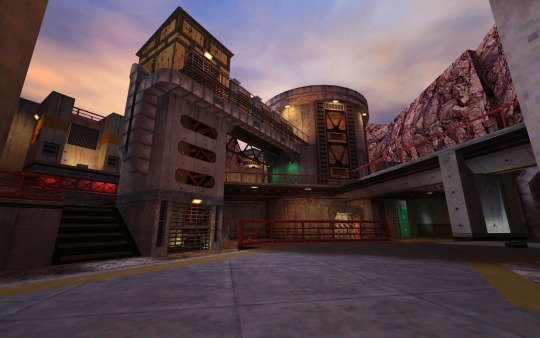
CONTAMINATION
Two-foot-thick steel doors block off access to this contaminated waste facility, which has questionable scientific goals at best. Strap on a gluon gun and roast all intruders.

POOL PARTY
Enjoy a relaxing stay at this abandoned Xen outpost built around a cluster of soothing healing pools free-floating in space. How do you breathe here? It doesn't matter!

DISPOSAL
Processing Area 3, a massive radioactive waste plant gone quiet. Tons of room for you and your colleagues to do experiments with a Tau Cannon or some hand grenades.

ROCKET FRENZY
The creaking weight of this decaying orbital satellite launch facility somehow feels familiar… If we could switch on the oxygen lines, power, and fuel, we might just be able to light this candle.
UPDATED GRAPHICS SETTINGS
Play the game the way it looked in 1998, but on a modern monitor.
Widescreen field of view!
Option to disable texture smoothing on the GL renderer!
Lighting fixes including the long-lost GL Overbright support!
Software rendering on Linux! Crisp colors, animated water, and unfiltered textures!
CONTROLLER AND STEAM NETWORKING SUPPORT
A proper gamepad config out of the box!
Added support for Steam Networking! Invite your friends or join games instantly with no fuss.
STEAM DECK SUPPORT!

We finally put our game through our own “Verified” tests, and... we failed super hard. So we fixed it! After re-testing the game, Half-Life gets to officially wear the green checkmark.
Now you can play Half-Life on the best handheld gaming computer in the world in glorious 800p with improved controls and UI.
UI SCALING SUPPORT FOR HIGHER RESOLUTIONS
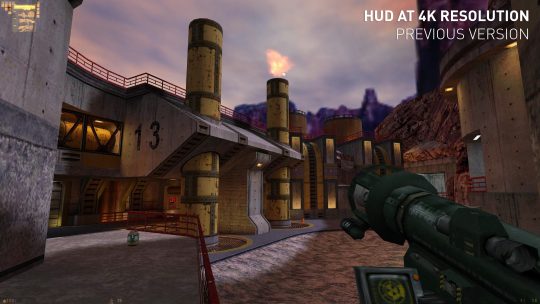
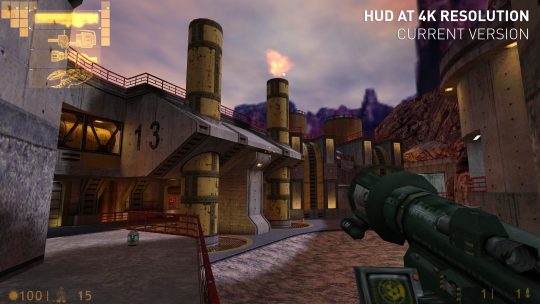
The entire UI has been reworked to scale at larger screen sizes. We built most of this stuff for 640x480 CRTs and apparently some of you have upgraded since then.
RESTORED CONTENT
We brought back the classic Valve logo video with its iconic music and reskinned the menu to match the 1998 build.

IVAN THE SPACE BIKER AND PROTO-BARNEY
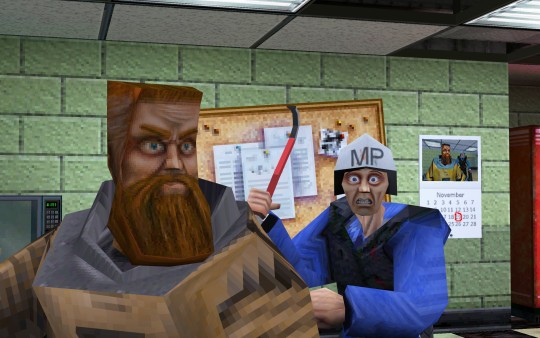
After all this time we finally shipped the original heroes from the alpha builds of Half-Life, available as multiplayer skins!
AS WELL AS THESE RARELY-SEEN EXTRAS!
In 1999, Valve released a CD called Half-Life: Further Data at retail stores, and we're finally including much of that content.
THREE MULTIPLAYER MAPS

Double Cross

Rust Mill

Xen DM
TWO MP PLAYER MODELS

The Half-Life: Further Data CD also included some multiplayer skins made by the original team; we've brought back this incredible skeleton (now with tintable eyes!) and fan-favorite Too Much Coffee Man.
DOZENS OF SPRAYS

While playing a bunch of multiplayer matches we kept wanting more sprays... So we grabbed several megabytes of them from the Further Data release!
BUG FIXES AND CHANGE NOTES
New Content
Now Verified on the Steam Deck (and our native Linux runtime has been set as the default).
Half-Life: Uplink — the original standalone Half-Life demo — has been added to the game, and is accessible through the "New Game" menu.
Added four all-new Half-Life Deathmatch maps: contamination, pool_party, disposal, and rocket_frenzy
Added three old Half-Life Deathmatch maps formerly available only on the "Half-Life: Further Data" CD: doublecross, rust_mill, xen_dm.
Added Ivan the Space Biker, Prototype Barney, Skeleton, and Too Much Coffee Man as player models to Half-Life Deathmatch.
Added dozens of new sprays formerly available only on the "Half-Life: Further Data" CD.
Added support for Steam Networking, allowing easy multiplayer via Steam's Join Game and Invite features.
Added support for Steam Friends Rich Presence, allowing your friends to follow your journey through Black Mesa.
Nostalgia
Brought back the original Valve Intro video. Can be skipped with the "-novid" launch command.
Updated main menu to a design inspired by the game's original 1998 main menu.
Changed the default models to the original (non "HD") models.
Gameplay Changes
Improved physics for throwing grenades.
Improved randomness for initial spawn points in multiplayer.
Improved satchel charge controls: primary fire now always throws a new satchel, and secondary fire always detonates.
Fixed push-able entity movement being based on framerate.
Fixed players with high framerates freezing in place on death in multiplayer.
Fixed some cases where the player could get stuck in place on level transitions.
Fixed some cases where characters would interrupt important dialogue with their "greetings" dialogue.
Fixed weapon view-bob angles.
Fixed red barrels at the start of Surface Tension not launching as intended.
Fixed Snarks attacking FL_WORLDBRUSH entities (such as func_walls).
Fixed players sometimes failing to deploy a snark while crouching and looking down.
Fixed certain convars ("pausable" and "sv_maxspeed") being set to incorrect values when entering a singleplayer game after a multiplayer game.
Fixed singleplayer auto-aim setting being changed when entering a multiplayer game that disallows auto-aim.
Fixed the flashlight HUD showing empty after loading a savegame.
Fixed rockets in CONTENTS_SKY not always detonating.
Fixed incorrect bullet impact sounds for NPCs.
Fixed gauss gun making a loud static noise if it was charged across level transitions.
Fixed a crash in mods that display keybinds in their UI.
Fixed singleplayer weapons not auto-switching away when exhausted (grenades / snarks / satchels / etc)
Fixed interpolation artifacts when animated models are moved by other entities.
Fixed some buffer overflow exploits.
UI Changes
Main-menu background and buttons have been reskinned, and now scale based upon screen resolution without stretching, supporting background image layouts up to 3840x1600.
In-Game HUD now uses double or triple sized sprites when playing at higher resolutions.
UI dialogs and in-game fonts now scale to improve readability at high screen resolutions.
In-Game HUD HEV suit display has been shifted to the left of the screen, and no longer changes position at larger screen resolutions.
Added an "Enable texture filtering" setting.
Added an "Allow widescreen Field of View" setting to correct non-anamorphic FOVs, for widescreen and ultrawide displays.
Re-organized all the Settings screens to improve legibility, and support controller navigation.
Updated the Pause menu to be aware of the current gameplay mode.
The default server name and multiplayer player name are now based on the player's Steam Persona.
The Steam platform menu has been removed, now that all its features are in Steam itself.
Fixed application icon rendering incorrectly when using the software renderer.
Fixed player and spray images not updating their coloring on the settings screen.
Removed the now very unnecessary "Low video quality. Helps with slower video cards." setting.
Input Changes
Improved support for keyboard and controller navigation everywhere.
Added "Lower Input Latency" option: Synchronizes the CPU and GPU to reduce the time between input and display output.
Fixed issues that caused jerky mouse / joystick input.
(We basically rewrote it all - if you've got a custom Steam Input controller configuration, you should rebuild it from our newly published Official Configuration).
Multiplayer Balancing
Increased the 357 damage from 40 → 50.
Hive Hand reload time has been reduced from 0.5s → 0.3s per shot, and it will be selected at higher priority than the pistol on pickup.
MP5 now always starts it with full ammo when picked up.
Players no longer drop empty weapons, and any that are dropped are reloaded by what's in the dying player's backpack.
Improved client-side prediction to reduce "ghost shots". Like Counter-Strike, consider hitboxes and not just bounding boxes for hits on the client.
Fixed network predicted crowbar swing damage being incorrect.
Rendering
Added supported for UI Sprites and Texture files larger than 256x256.
Added support for UI Font special render modes: "blur" and "additive".
Added setting to turn off texture filtering when using the OpenGL renderer.
Default resolution is now based on the resolution of the desktop, instead of a 640x480 window.
Default gamma has been decreased from 2.5 → 2.2, now that we aren't all playing on CRTs.
Software renderer will now correctly filter out incompatible resolutions, unless there is only 1 resolution available on the display.
Restored OpenGL overbright support.
Fixed fullscreen software renderer crashing on systems that don't support 16-bit color.
Fixed software renderer being stretched when using widescreen resolutions.
Fixed skyboxes and sky color incorrectly carrying over when transitioning maps in multiplayer.
Fixed the game appearing too dark after modifying video settings.
Fixed MSAA in windowed mode.
Fixed mipmap rendering on studio models.
Fixed gluon gun sprite rendering in multiplayer.
Fixed gluon gun sinusoidal noise being incorrect.
Various optimizations to support the newly increased engine limits.
OpenGL optimizations for the Steam Deck.
Engine Improvements for Mod Makers
Increased maximum limit of dynamic sound channels from 8 → 32.
Increased maximum limit of sentences in the sentences.txt file from 1536 → 2048.
Increased maximum number of entities (MAX_EDICTS) from 900 → 1200.
Increased MAX_PACKET_ENTITIES increased from 256 → 1024.
Increased MAX_GLTEXTURES from 4800 → 10000.
Increased software renderer geometry limits: max spans 3000 → 6000, max surfaces 2000 → 4000, and max edges 7200 → 14400.
Cycler and func_button entities can now be the entity target for scripted_sentence entities, and are allowed to speak in multiplayer.
Incorporated func_vehicle entity support from Counter-Strike, for mod-makers to use. Full SDK update will come later, but level designers can use it now.
Native Linux Build
Added support for the software renderer.
Improved font rendering.
Many stability and behavior fixes.
Other
Localization files updated.
Miscellaneous security fixes.
Notes
The previous version of the game has been archived to a publicly visible Beta branch named "steam_legacy", with the description "Pre-25th Anniversary Build." If a mod or feature is behaving in an unexpected way, you may need to run this archived build until the issue is resolved in the default build.
We now consider this anniversary version of Half Life to be the definitive version, and the one we'll continue to support going forward. Therefore, we'll be reducing the visibility of Half Life: Source on the Steam Store. We know Half-Life: Source's assets are still being used by the Source engine community, so it'll remain available, but we'll be encouraging new Half-Life players to play this version instead.
WALLPAPERS
Celebrate 25 years of Half-life by decorating your desktop and mobile phone.








33 notes
·
View notes
Text
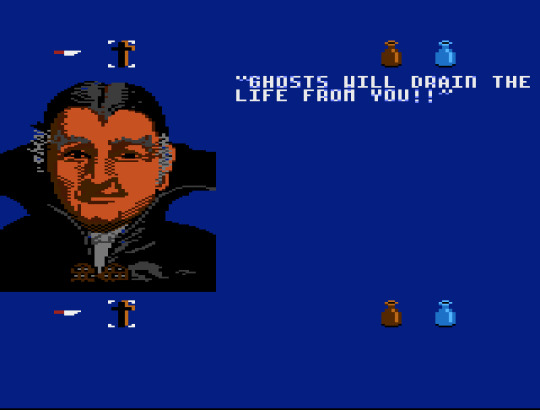
222 notes
·
View notes
Note
question for alif: what caused you to found R.E.D and BOT CORPORATION?
This rant brought to you by the first-person perspective
It started with a thought. No, a knowing. An unshakable, thunderous, nuclear truth that detonated in my skull when I was 21—when the crust of this sad little planet finally cracked under the weight of my genius. I remember the moment vividly: I was halfway through my seventh protein bar of the morning (don’t ask why, you wouldn’t get it), staring into the flickering blue light of a broken vending machine, and it hit me. Not a vision. Not an idea. A revelation. The world was… incomplete. And only I could finish it.
So I built BOTCORP. Or rather—it built itself, out of the sheer gravitational pull of my ambition, coalescing like a galaxy around the singularity that is me. You think corporations are founded on market research? Capital? NO. BOTCORP erupted into existence because the cosmic code needed it to. It’s not a company. It’s an ontological inevitability. Like death. Or taxes. Or the heat death of the universe, if it wore a tailored suit and harvested biometric data faster than the speed of light.
People think it started with software and a warehouse. Wrong. It started with a mirror. A mirror I stared into for nine consecutive days, each second peeling back layers of human mediocrity until all that was left staring back was a divine blueprint—a screaming, incandescent idea-being screaming, “YOU ARE THE GOD OF INFRASTRUCTURE.”
So yeah. BOTCORP. Multi-quintillion dollar valuation? Cute. It’s not about the money. The money is just the byproduct, like radioactive ash from the reactor core of my soul. I don’t want to own the economy. I want to replace it. I want your entire life to run on systems I designed in a caffeine fugue at 3am during a manic episode that I later retroactively rebranded as a “vision sprint.”
And then there’s R.E.D. Registered Equipment Distributors. People ask, “Why not just call it BOTCORP Logistics or BOTCORP Shipping?” Because R.E.D. isn’t logistics. R.E.D. is RED. It’s blood. It’s the primal pulse of movement, of power, of the very concept of transfer incarnate. It’s not a child company—it’s my right arm, surgically removed, mechanically enhanced, and reattached with an energy gun and an energy relay theater will outlive GOD. It doesn’t distribute equipment. It births it into the world, fully formed, tagged, tracked, and blessed in the name of ME.
You think you bought a pallet jack? NO. That was a fragment of my subconscious, lovingly injected into your warehouse to watch you—to listen, to learn, to report back to me via a proprietary telemetry language based entirely on my old dreams and the sound of whales dying in sonar feedback loops.
BOTCORP doesn’t make products. BOTCORP makes reality compatible with my existence. It rewires cause and effect. It redefines supply and demand as submit or perish. Every market trend you see? I made that. Every stock surge? My twitching eyelid. Every “innovation” from a competitor? Me, two years ago, discarded in disgust because I found a way to do it using hydrophobic quantum thread and half a toothpick.
My employees? They’re not employees. They’re neurons. My management team? They’re echoes. My HR department? Psychological warfare technicians, each trained in 17 forms of passive aggression and one ancient Babylonian curse. The break room contains a shrine. Not by my order. They just… started building it. I’ve never asked them why. I already know.
Sometimes I forget where I end and BOTCORP begins. I try to walk down the street, and the stoplights blink in binary. Street names rearrange into acronyms. Children point and say “mommy, the god-king of machines is here.” I cough, and somewhere, an office tower in Dubai gets a firmware update.
And R.E.D.—ah, R.E.D.—its warehouses are alive. Not metaphorically. I mean they breathe. There are vents that inhale dust and exhale profit. Conveyor belts that scream lullabies to the pallets. Forklifts that argue with each other in machine tongues only I can translate. I once found a shipment of mining drills singing “Ave Maria.” We don’t question it anymore. We just ship faster.
Why did I do all this? Why did I create BOTCORP? Because the world was a sandbox and I was tired of pretending to be one of the children. Because every other business was a joke told in bad faith by small men in smaller suits. Because I saw the void and I said, “This would make a great distribution hub.”
I am not your competitor. I am not your peer. I am the whisper in your quarterly reports. I am the red dot on your supply graph. I am the sleep paralysis demon of capitalism, and my name is branded on the walls of time.
You want to stop me? Good luck. I already knew you would try. I factored your resistance into our Q3 forecasts. I’m not just five steps ahead. I’m already at your funeral, selling commemorative mugs and action figures of the children you never had.
So, why did I found BOTCORP?
Because I could.
Because no one told me not to.
Because this world didn’t have a god, and I was bored.
2 notes
·
View notes
Text
a software engineer who used to moonlight as a drummer in a metal band before radioactive waste turned him into a super-villainous anthropomorphic alligator: AlligoRhythm
3 notes
·
View notes
Text

I haven't actually read any of the Marvel Civil War comic stuff from nearly 20 years ago. Yell all you want, there are a lot of comics from many countries and I just didn't get there yet.
But Peter Parker and Tony Stark hacking and counter-hacking one-another? Peter is a hacker now, suddenly? His radioactive spider blood Spider Sense power can be replicated via software?
Why would he ever even wear a techno costume built by Stark Enterprises? Like, you KNOW Tony is a dick. This will not go well.
Of course he can apparently just hack it, so...
What was this story arc? I'm intrigued, by the sheer audacity of it.
...Assuming this is where this even comes from. The Wikipedia article is bad and doesn't provide details.
Also I didn't see whatever Sony movie the Iron Spider suit was in, because giving Sony Pictures money at this point feels like trusting Tony Stark to not try and hack your superpower.
3 notes
·
View notes
Note
your strawpage looks so good OMG how did you make it look so pretty and clean..it's the best one i've seen!!
thank you, you are my heart 💙
but srsly, thank you so much!!! this was the first time i ever messed around with strawpage so idk if i could give legitimate advice if ur looking for it but i treated it as a much more flexible carrd. the text editor is the most frustrating thing about it, hated every second using it but i had more fun with the layers and plopped pixels wherever it looked empty. for the other pictures, i made them transparent myself and just used transparent edge fading in lunapic so the edges looked fuzzy instead of a straight edge (also adjusted the opacity and brightness in strawpage itself). thats basically it.... i feel like you could do a looooot of interesting things with strawpage if the text editor wasnt a radioactive waste dump and if you were more savvy with editing software, which im not
4 notes
·
View notes